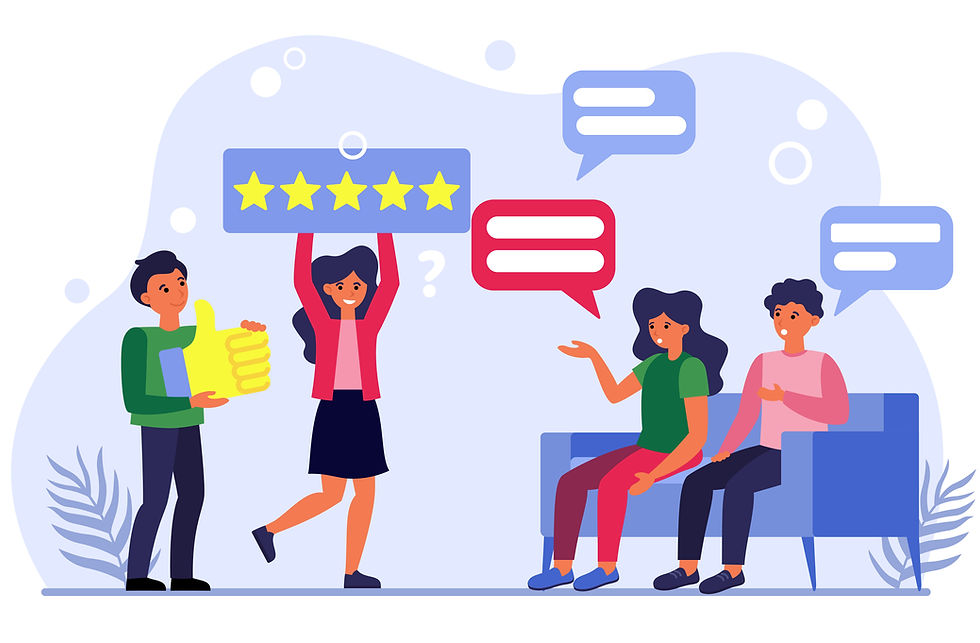Meaningful Course Engagement with AI
- Zulsyika Nurfaizah
- Mar 28
- 4 min read
Creating a course policy to support students’ meaningful engagement with AI
As a student in the MA degree in Learning Technology and Experience Design, one of the degree tracks in NYU’s Educational Communication and Technology program, I’ve seen firsthand how various fields, including education, have rapidly adopted Generative AI (Hamilton, 2024). As we learn about cutting-edge research from the cognitive and learning sciences and how to design digital learning tools for varied contexts, AI exploration is generally encouraged, especially as brainstorming and ideation partners, as stated in the Experience Design and Artificial Intelligence class policy by Professor Safinah Ali. We collaborated with Google Gemini and created learning games with Google Colab in her class.
From educators' perspective, the use of AI in the classroom raises several concerns, such as plagiarism, reduced human interaction in learning, data privacy, and security (Hamilton, 2024). On a positive note, using generative AI to brainstorm ideas and do initial research can provide faster and better resources. According to a survey by Forbes Advisor in 2023, 60% of educators use AI in their classrooms, mainly for AI-powered educational games (Hamilton, 2024).
Formative Approach to AI Usage
The first conversation about AI usage I had was held in the early meeting of the Foundation of Learning Sciences course in the Fall of 2023. Professor d’Anjou asked about our experience using generative AI and our opinion about it. We had previously covered the ICAP (Interactive, Constructive, Active, Passive) Framework, a taxonomy of four modes of overt engagement behaviors (Chi & Wylie, 2014), so the class discussed whether using generative AI counts as interactive, constructive, active, or passive learning. After some discussion, we eventually reached a consensus that using generative AI counts as interactive learning because we take turns with the AI to construct the information. Professor d’Anjou also highlighted the importance of reviewing generative AI information and ensuring the sources are valid and recent.
In a few other courses, the Foundation of Cognitive Science and User Experience Design, Professor Bromley and Professor Bouwmeester, respectively, encouraged us to use generative AI to explore and brainstorm, but prohibited it for assignments except grammar-checking tools like Grammarly.
However, the most in-depth discussion I had about generative AI in education came out of the Design Process for Learning Experience course. Professor Bryan shared several interesting frameworks that helped change my approach to using generative AI more strategically. This first framework describes a spectrum of AI engagement. There are three points of the spectrum, the extreme left spectrum bans AI completely and specifically tells us to use our brains only. The middle spectrum allows limited AI usage, meaning we can engage with AI to some degree and emphasize the importance of following the established rules or guidelines. The extreme right spectrum encourages responsible use of AI, meaning we’re allowed to use it as long as we’re mindful of its’ limitations (Crabtree, 2023) such as ensuring we review the sources and cite generative AI properly if we use the information (McAdoo, 2023).
Professor Bryan then broke down the framework into a sample list of activities belonging to each category. This detailed list made the spectrum easier to understand and provided a clearer resource on how to be a responsible generative AI user outside of class.


Tailor to Course Activities and Assignments
Professor Bryan encouraged the class to collaboratively decide the appropriate approach for each course activity and assignment by putting engagement stickers (AI-Free, AI-Helpful, and AI-Curious) next to the assignments using Google Slides. This collaborative way of developing AI policy in class would promote understanding between the professor and students and encourage critical and meaningful technology usage for learning.


It is important to keep in mind that like any other tool, generative AI can both be a blessing and a disaster depending on their intention and how your students use it. Professors d’Anjou, Bouwmeester, Bromley, Bryan, and Ali have demonstrated that the first step in guiding students to be responsible generative AI users is to have transparent communication and develop a shared understanding of generative AI usage in the classroom.
Resources
Boston College (2024, February 19). Communicating with Your Students around AI. Boston College: Center for Digital Innovation in Learning. Retrieved July 4, 2024, from https://cdil.bc.edu/resources/emerging-technologies/engaging-with-ai/ai-students/
Bryan, L. (2024, January 7). Understanding Your Learners & Context [Power Point Slides].
Chi, M. T. H., & Wylie, R. (2014). The ICAP Framework: Linking Cognitive Engagement to Active Learning Outcomes. Educational Psychologist. 49(4). 219–243. https://doi.org/10.1080/00461520.2014.965823
Crabtree, M. (2023, August). What is AI Literacy? A Comprehensive Guide for Beginners. Datacamp. Retrieved August 6, 2024, from https://www.datacamp.com/blog/what-is-ai-literacy-a-comprehensive-guide-for-beginners
Hamilton, I. (2024, June 6). Artificial Intelligence In Education: Teachers’ Opinions On AI In The Classroom. Forbes. Retrieved July 4, 2024, from https://www.forbes.com/advisor/education/it-and-tech/artificial-intelligence-in-school/
McAdoo, T. (2024, February 23). How to cite ChatGPT. APA Style. Retrieved July 4, 2024, from https://apastyle.apa.org/blog/how-to-cite-chatgpt?utm_source=apa.org&utm_medium=referral&utm_content=/pubs/journals/resources/publishing-policies
New York University (n.d.). Frequently Asked Questions About Teaching and AI. Retrieved July 4, 2024, from https://www.nyu.edu/faculty/teaching-and-learning-resources/teaching-with-generative-tools/frequently-asked-questions.html#2




Comments